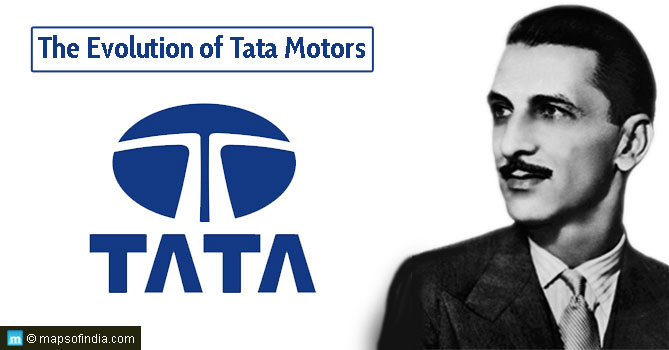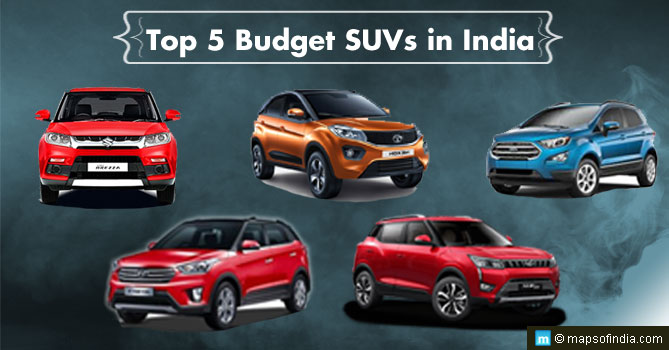Tata Motors Limited is an Indian MNC in the automobile industry, headquartered in Mumbai (Maharashtra). It is the largest automobile manufacturer of India in terms of revenue (US$43.910 billion). This Tata Group subsidiary manufactures a wide array of automobiles including cargo trucks, buses, passenger cars, luxury sedans, hatchbacks, SUVs, MUVs, vans, sports cars, military vehicles, construction equipment, coaches, and many more.
Tata Motors has six manufacturing units (Jamshedpur, Pune, Sanand, Lucknow, Pantnagar, and Dharwad) across India. Their overseas manufacturing units are located in Great Britain, Argentina, Thailand, and South Africa. Over the last two decades, Tata Motors has expanded its capabilities through acquisition of and joint ventures with some of the leaders in luxury cars, bus, and commercial vehicle segments.
– Tata Motors entered into a joint venture with Marcopolo S.A. to form Tata Marcopolo for manufacturing high quality buses.
– The company also formed a joint venture with Hitachi to create Tata Hitachi Construction Machinery for production of construction-equipment.
– For manufacturing Fiat Chrysler, Tata branded vehicles, and automotive components, they entered into a joint venture with Fiat Chrysler.
Currently, its subsidiaries are Jaguar Land Rover, Tata Daewoo, Tata Hispano, and Tata Technologies.
Phase I : 1945-1999
1. Tata Motors was established as Tata Engineering and Locomotive Co. Ltd. (TELCO) in 1945 under the leadership of J.R.D Tata. It ventured into locomotive manufacturing.
2. In 1954, it collaborated with Daimler-Benz AG to roll out its first ever commercial vehicle.
3. It was only in 1988 that it started manufacturing for the passenger vehicle market. Their first passenger vehicle was TataMobile 206 (a pickup truck that is popularly known as Tata Telcoline).
4. After this initial success, TELCO introduced their hugely successful sports utility vehicle, Tata Sierra, in the year 1991. Subsequently, the company rolled out a station wagon Tata Estate in 1992, a 5-door SUV Tata Sumo in 1994, and Tata Safari in 1998.
5. It was Tata that launched the first ever fully indigenous passenger car of India. They named it Indica and launched it in 1998. It became very popular in the commercial segment.
6. TELCO entered into joint-venture with Mercedes Benz in the late 1990s and successfully manufactured Mercedes Benz E Class, the top-class luxury sedans.
Phase II : 2000-2005
1. TELCO introduced Indica 2000, as well as the Euro II Compliant passenger cars, entering the new millennium in style. The company changed its name from TELCO (Tata Engineering and Locomotive Co. Ltd.) to Tata Engineering Ltd.
2. In 2001, they launched their Indica V2 range’s petrol version.
3. In 2003, Tata Engineering Chairman Ratan Tata informed the media that during the annual general meeting in Mumbai, the company had decided to rechristen Tata Engineering Ltd as Tata Motors Ltd. In fact, this is when he also spelt out his dream project of launching India’s first ever Rs 1-lakh passenger car, which later became popular as Tata Nano.
4. In 2004, Tata Motors acquired Daewoo Commercial Vehicles Company (a renowned South Korean truck manufacturer) to capitalize on their capabilities of manufacturing cargo trucks. Tata Motors got listed in the New York Stock Exchange in September 2004, becoming the first ever engineering sector company from India to get listed on this bourse. The same year, Tata Motors reached the milestone of producing 3 million passenger vehicles.
5. The Tata Safari DICOR was unveiled in 2005 in Kerala.
Phase III : 2006-2014
1. Tata Motors entered into a joint venture with Marcopolo (a Brazilian bus manufacturing behemoth) to create Tata Marcopolo Bus.
2. In 2008, the company purchased the legendary luxury car and SUV brands – Jaguar and Land Rover – from Ford Motors. The same year, Tata Motors also launched the world’s cheapest car – Tata Nano.
3. The Lucknow plant of Tata Motors won the Rajiv Gandhi National Quality Award in 2009.
4. In 2010, the company went on with its expansion spree and acquired 80% shares of the Italian engineering and design firm, Trilix, at a cost of €1.85 million. This acquisition helped Tata Motors to enhance the styling and design capabilities of its cars.
5. Over €6 billion was invested by the automobile company in 2012 to develop Futuristic Combat Vehicles, ushering in the next era of growth for Tata Motors.
6. T1 Prima Truck Racing Championship was also introduced by Tata Motors in 2014.
Phase IV : 2015-Present
1. In 2015, Tata Motors launched its special edition of Zest model, exclusive Buszone dealership, 6 models of Prima range trucks in Kenya, 2 models of Prima range trucks in UAE, and 3 variants of heavy commercial vehicles in Oman.
2. In 2016, the company launched popular hatchback TIAGO and also lubricants with Petronas. Additionally, they bagged major orders from MMRDA authority in Mumbai for supplying 25 hybrid buses.
3. Tata Motors became one of the largest corporations of the world, ranking 226th in the Fortune Global 500 list of 2016.
Conclusion
Tata Motors has touched many milestones. They are the largest automobile manufacturer of India. In fact, they are also the 2nd largest bus manufacturer, 4th largest truck manufacturer, and 17th largest motor vehicle company (in terms of volume) of the world. This automobile behemoth currently employs over 80,000 employees, making it one of the largest Indian MNCs (both in terms of revenue and employee strength).





